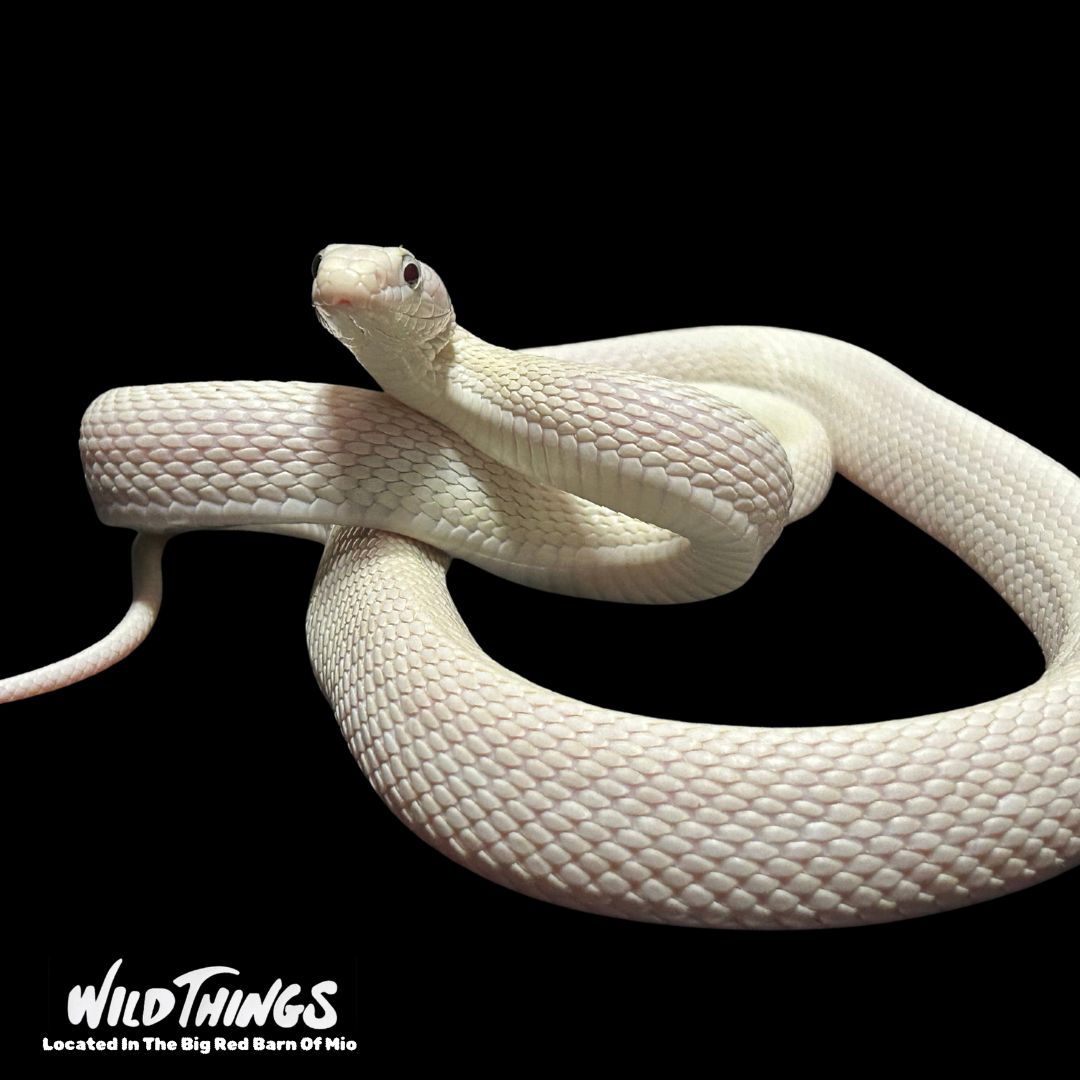AuSable River Outdoors
Albino Rat Snake
Albino Rat Snake
Couldn't load pickup availability
Species: Albino Rat Snake
Scientific Name: P. o. lindheimeri
Origin: Native to southeastern Europe and Asia Minor.
Lifespan: 10-15 Years
Size: 4 - 5.5’
Enclosure Type: They’re escape artists and can squeeze through very small cracks, so be sure that your enclosure is secure with cage clips and a screen top.
Enclosure Size: The minimum enclosure size recommendation is a 4'x2'x2', but larger in height, such as 5x3x3' is more suitable.
Substrate: Wood shavings such as aspen or cypress will provide a more natural look while also allowing for burrowing and spot-cleaning.
Décor: Suitable decor to enrich your enclosure include ledges, hollow logs, thick and sturdy branches, hides or caves, sturdy and heavy plants, and rocks
Water: Fresh, clean water should always be provided. The water dish should be large enough for the snake to soak in and heavy enough so that the snake cannot knock it over.
Temperature: Being cold blooded, your snake can only regulate its body temperature by physically moving to colder or warmer areas, so it’s important that you provide your snake with a range to choose from. Such a gradient is easiest to achieve with longer enclosures and a single heat source on one side. Texas rat snakes prefer temperatures in the mid-80s on that side, then mid-70s for the cool side. You should use a lighting controller for reptiles to prevent overheating and to adjust the temperatures as needed.
Humidity: They won’t require much humidity until they begin a shed cycle – signs of which are dull scales, cloudy eyes, and reclusive behavior. You should provide your snake with a high humidity shed box during this time and fill it with damp paper towels or moss to keep the inside moist.
Lighting: Specialized UVB or UVA lighting is not necessary for these animals, but a light cycle can help regulate their feeding and breeding response. A snake who receives outside light from a window will notice when the days grow shorter and may stop eating to prepare for the oncoming winter. This is helpful if you wish to breed your snakes, otherwise you may try to avoid this by hooking their lights up to a timer and setting it to provide at least 12 hours of light a day.
Type Of Diet: Carnivorous
Types Of Food: They will eat almost anything in the wild – lizards, birds, eggs etc. – but in captivity you can exclusively feed them rodents. Hatchlings are fed mice until they are large enough for rats. Ideal prey is as wide as or slightly larger than the widest part of your snake.
Feeding Schedule: Every five days to a week is most suitable, with adults capable of going longer in between meals than growing snakes.
Supplements: No supplements are required for your rat snake.
Share

